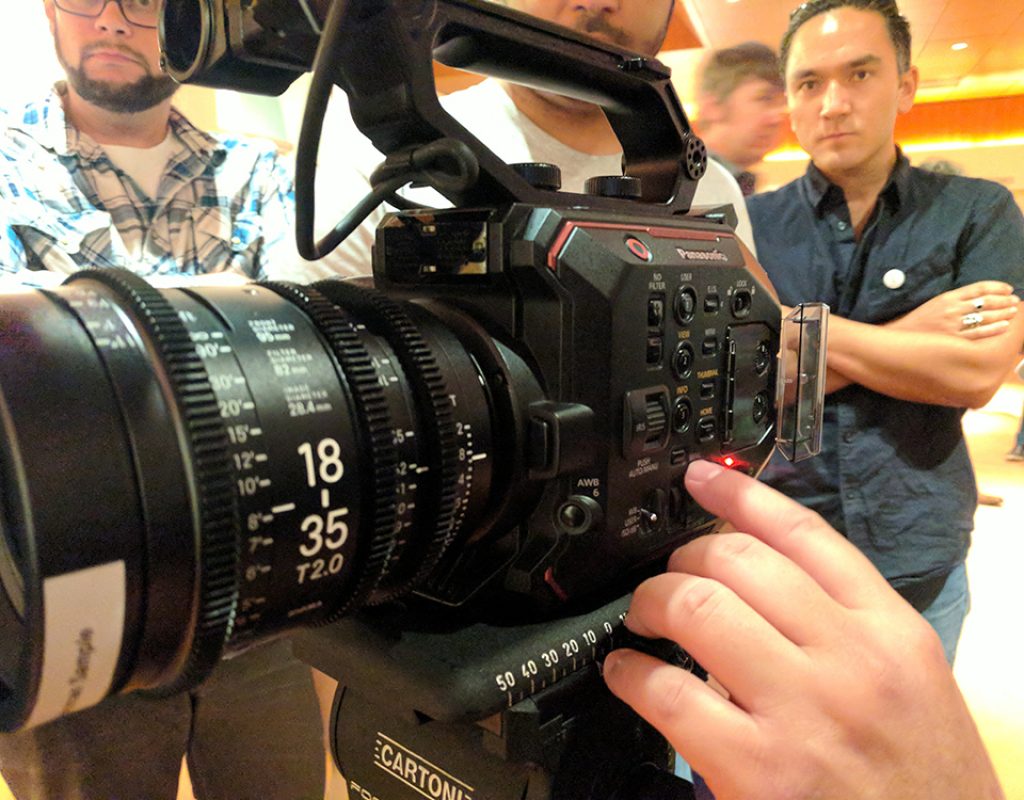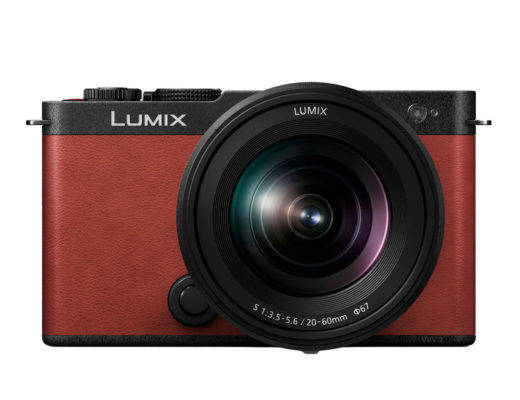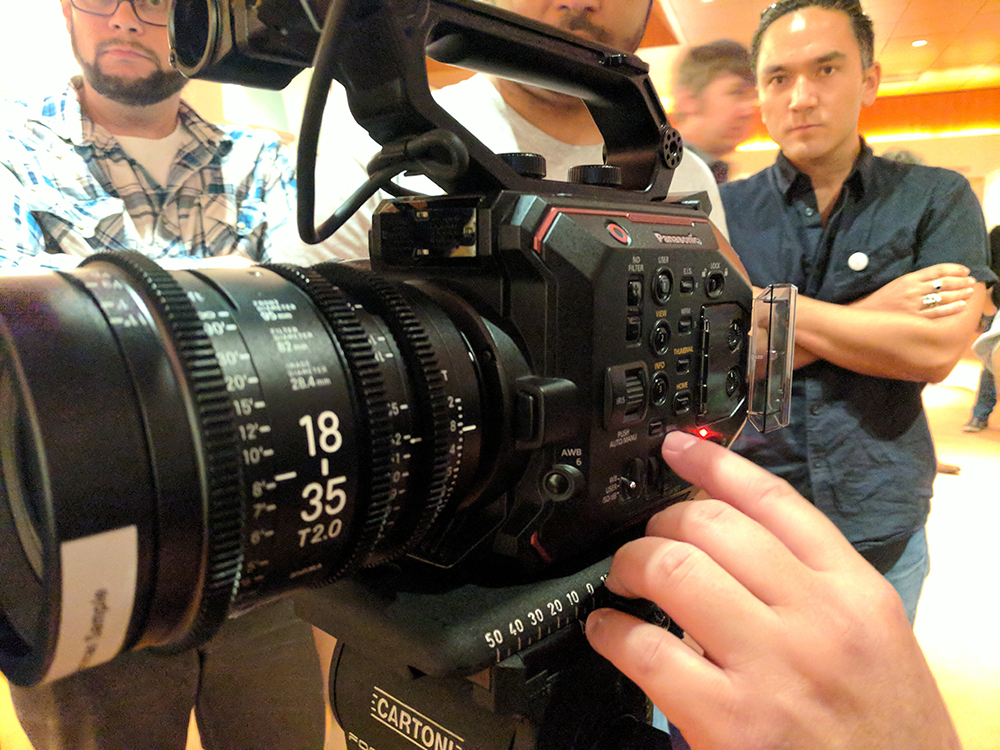
On September 14th, the new Super35 EVA-1 from Panasonic was presented for evaluation at the Academy of Motion Picture Arts and Sciences, along with three shorts in the lovely Linwood Dunn Theater to show off the images it can produce. I stopped by to see what they looked like.
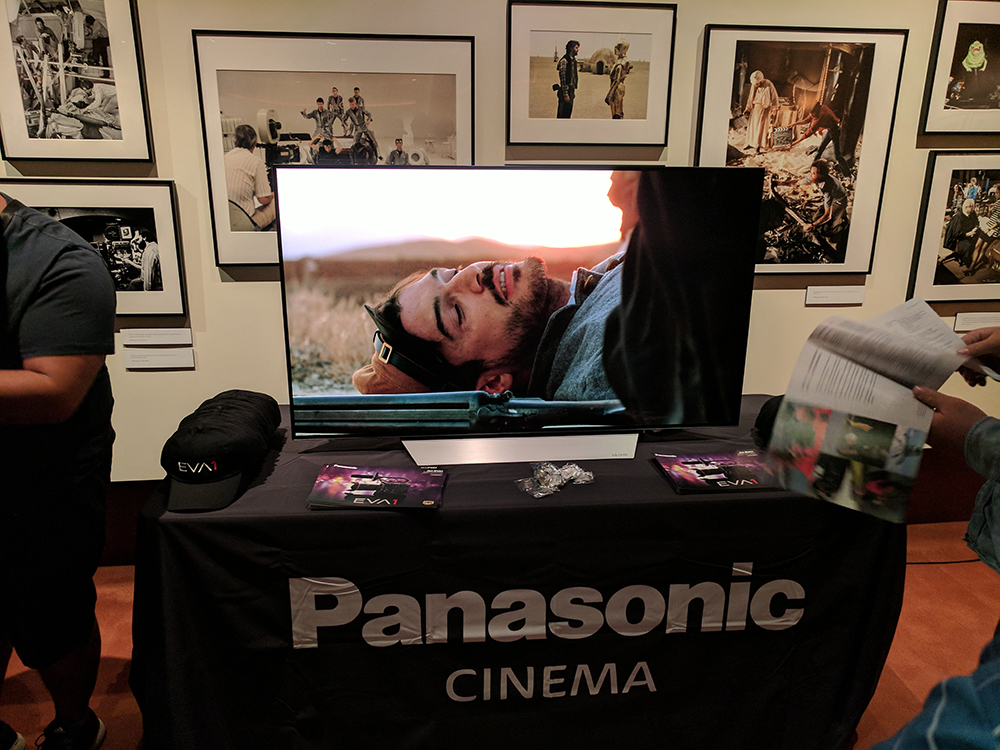
My main camera is a Canon C100mkII and I’ve been eyeing this new Panasonic as a potential replacement since it was announced. I absolutely love the image I’ve been getting out of the Canon, especially after modifying some color and gamma settings, so I wasn’t in any hurry to switch, but I might be now. This thing is pretty cool.
Right off the bat, it has 14+ stops of latitude that the films showed would seem to corroborate. If there’s one thing I want in a camera, it’s as much latitude as possible. I’ll take 1080p if I’ve got a 10bit 4:2:2 image with a lot of dynamic range. This camera ticks both boxes. The cameras used to shoot the films were pre-production models, but you wouldn’t think it with how well the shorts came out.
In Elle Schneider’s film Near to Superstition, there’s a scene in which a character approaches a group of women sitting around a campfire (the only source of light) and in the wide, amazingly, you can see stars in the background. That’s the kind of sensitivity afforded by the Dual Native ISO in the EVA-1, coming in at 800 and 2500. On top of that rather amazing feat, the fire rendered beautifully, which is something many cameras simply fail at. The ISO switching feature and great color space also made it easy for both Elle and Johnny Derango (director of the second film, Radio 88) to shoot in caves, outside under streetlamps, and other traditionally difficult situations.
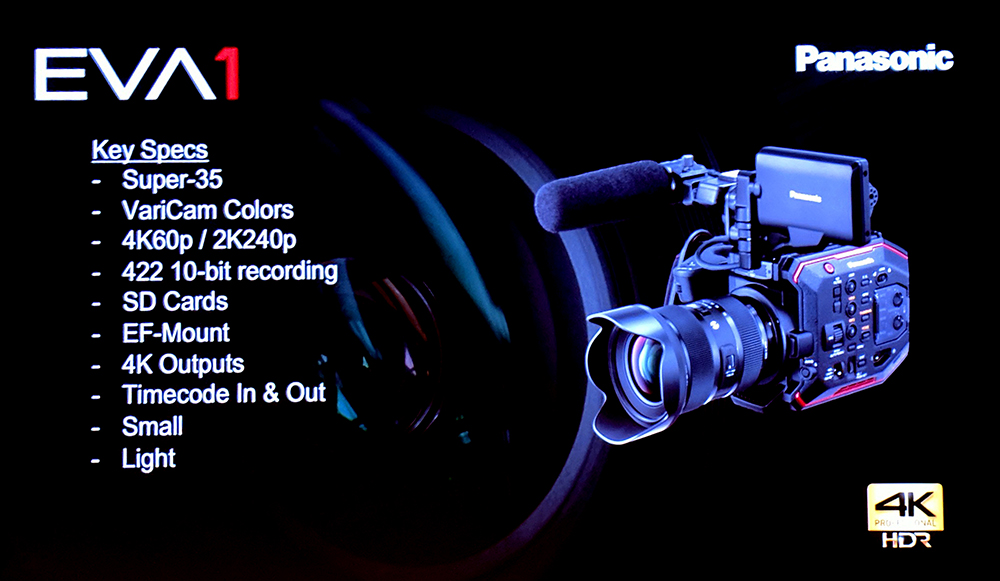
In regards to that color space, it exceeds the BT2020 allowing for HDR acquisition and as far as color looks essentially like the rest of Panasonic’s higher end line, making it a solid B-Cam choice for a Varicam shoot if need be. Or, if you simply just like Panasonic’s colors, this is right up your alley. I’ve never been their biggest fan, as being a first adopter of the AF100 left a bad taste in my mouth, but the EVA-1 is having me seriously reconsider that position with how good of an image it can produce in such a small package. It’s also got a lot of features I seriously love, which I’ll get into here in a bit.
One thing I’d argue after seeing the unfiltered Near to Superstition right behind the ProMist-heavy Radio 88, is that this camera’s image wants to be softened up a bit. The recent popularization of vintage glass and diffusion won’t stop with the EVA-1. That being said, there are plenty of situations where you’ll want to shoot clean, and in that case you’ll be well served here as the picture is tack sharp but not in a “video” way.
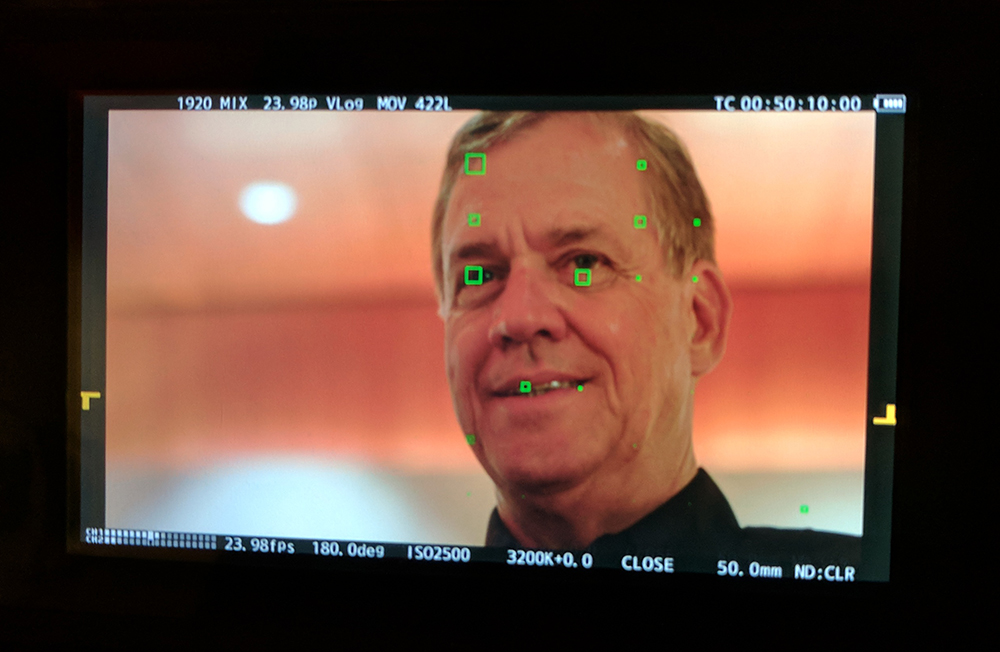
Some features I immediately liked were the focus and horizon assistants, as well as the three built-in ND filters rated at 0.6, 1.2 and 1.8. In regards to the assistants, Panasonic has developed a new way to judge focus by placing green squares over the areas of the image that are in focus that get larger as that area becomes sharper. This works well in most of the situations we tried it in, but didn’t really work in very dark scenes as it would appear to be contrast-based, so there is that. The room we were in was pretty dark already, but I had to point the lens at some duvetyne in the shadows for it to stop working, so take that as you will. The camera includes traditional focus peaking as well.
In the image above you can also see two yellow lines on either side of the image: that’s your horizon assist. As you tilt the camera, the vertical lines extend in either direction showing you which way you’re angled. I shoot handheld a lot and on my Canon I have the middle-frame line overlay up on my image at all times and have to judge it against something in the frame, so this is a big plus for me. I also love the fact that all the information is outside of the image on your monitor. Nothing is more annoying than having to clear your display just to see what’s going on.
Another feature I love is the “home” button. Aside from simply bringing you back to the main screen, a second press shows you an Arri-esque information panel, the settings of which you can modify by simply touching the screen. Very nice, and very handy in the field. The rest of the menus are similar to the Varicam line.
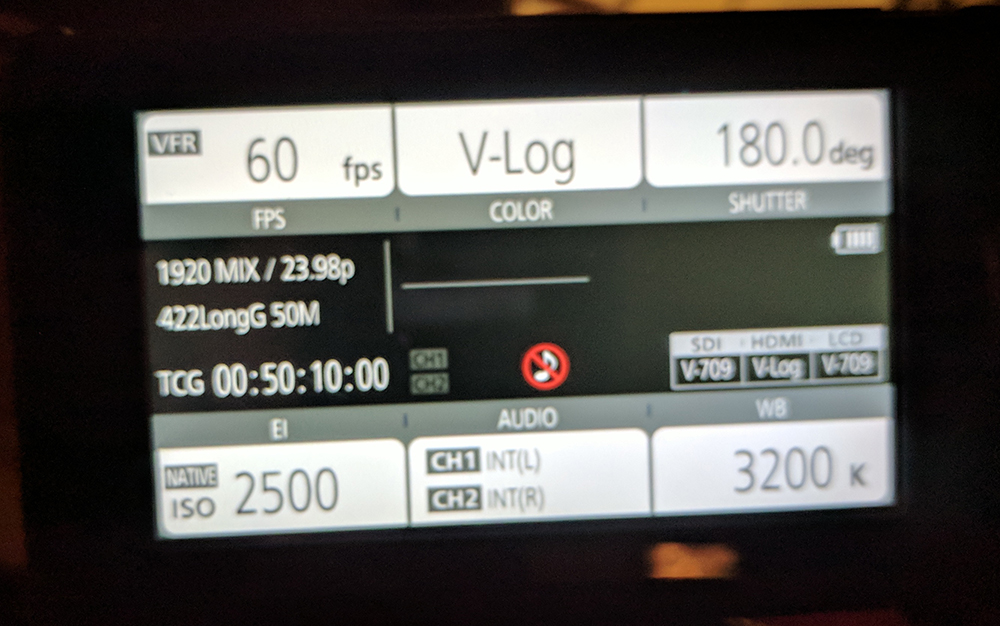
Now, you may notice that there’s no viewfinder. This may or may not bother you, but after the initial shock I had to admit that I almost never use the one on my Canon, so it wouldn’t be that big of a deal. Your preferences will obviously dictate how that affects you. The placement of the LCD is really nice, however, being located right around where it is on a C300. It also comes with its’ own sun shade, an accessory I’ve wished existed for the Canon for years. I tend to shoot around waist-height when running and gunning, and the screen is in prime position for that type of shooting. At just a hair over 4.5lbs with a battery and lens, it’s light but feels substantial enough, and along with the ergonomic side-handle allows for very comfortable handheld operation in that position. The handle itself has 2 of the 9 user-assignable buttons both conveniently placed by where your fingers rest, as well as a fingerwheel in the index-finger position as one would expect.
The top of the camera is completely flat after removing the top-handle and has numerous screw holes open for you to attach any number of accessories. Zacuto seems to be the brand partner of choice in this case with their Gratical and other accessories intended to take advantage of those mounting points on display next to the cameras.
Blissfully, the camera shoots to simple SDXC or SDHC cards in MOV or AVCHD, using the 5.7K sensor to deliver 4K, UHD, 2K, 1080p or 720p and can do so to one or two cards simultaneously. In almost every case you’re getting your image in 10bit 4:2:2. Frame rates span from 23.98 (and 24!) all the way up to a very respectable 240p in 2K. As someone who would probably shoot 2K most of the time anyway, that’s fantastic. A 128GB card will get you a little under two hours of recording time in most formats, unless you shoot something like 422Intra 400M 4K (40 minutes) or AVCHD 720p (35 hours). If you’re shooting a doc or something and 1080p works just fine, you can shoot for 11, 12, or 17 hours on that same 128GB card depending on what flavor of AVCHD you choose. Everything else comes in MOV.
If you’re in the latter situation you will either need a separate power solution or a handful of batteries as the largest brick they offer lasts for a relatively respectable 5.5 hours, whereas the bundled one clocks in at almost 3 and a half.
Overall this camera looks great. It nicely fits in between the Varicam and the introductory-level GH5, as well as being a solid contender to Canon’s C200 and Sony’s FS5. Well done, Panny.
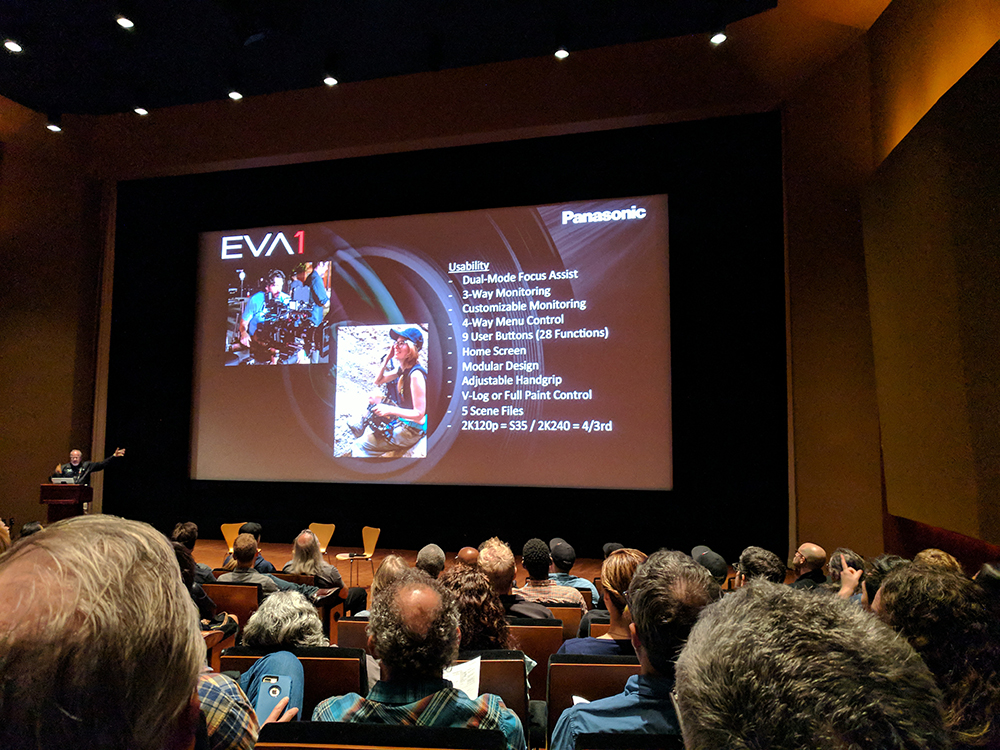
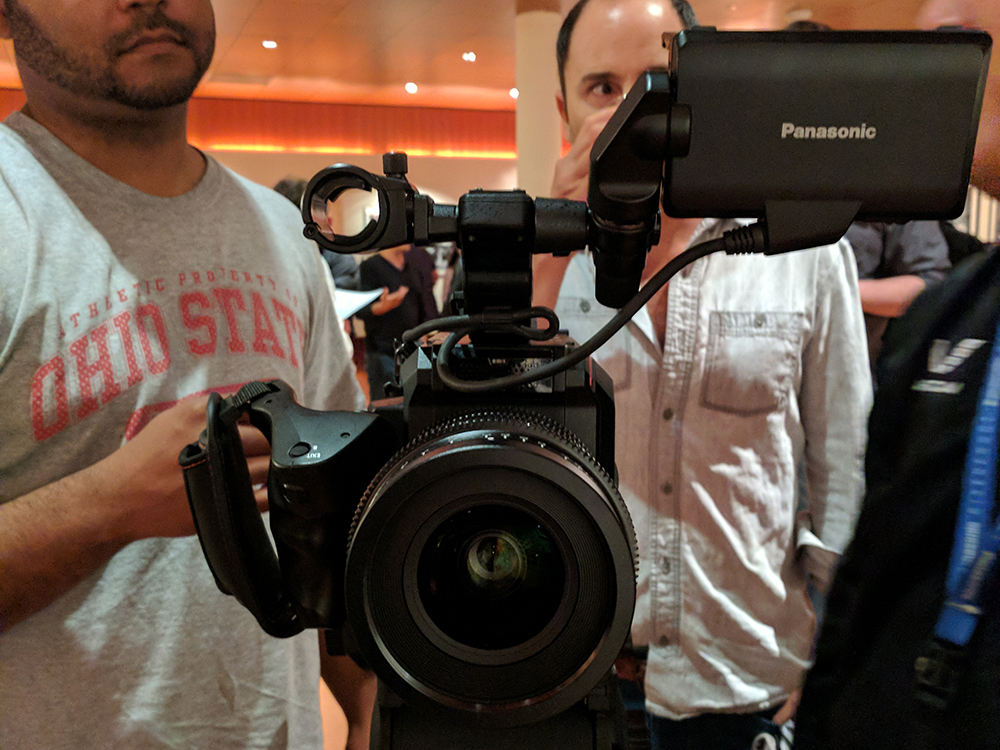
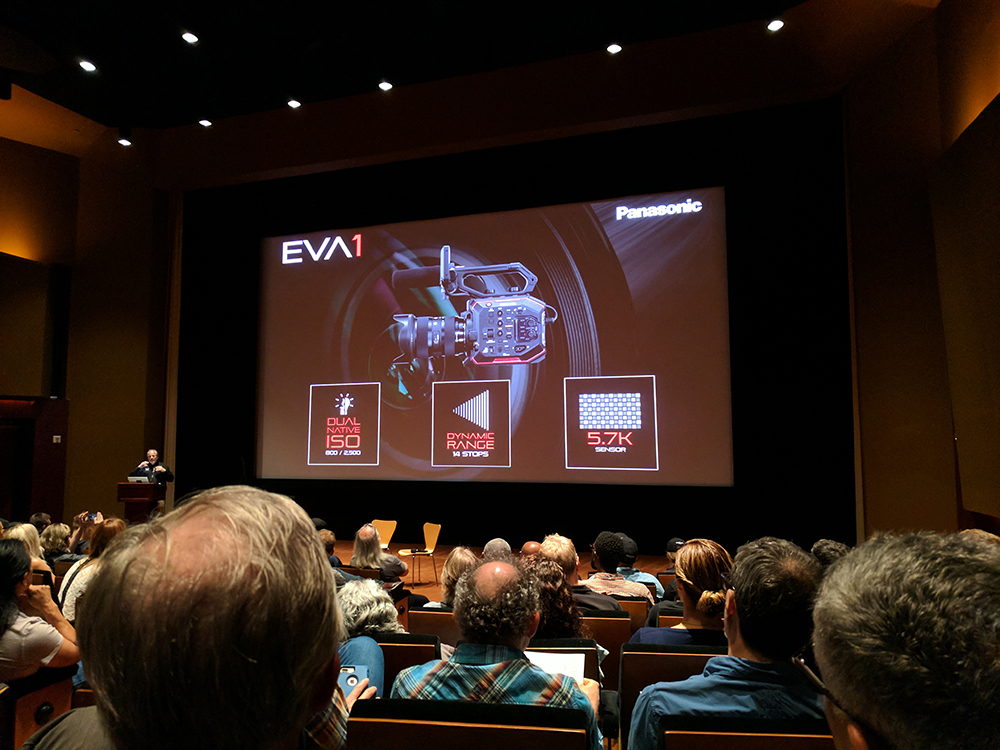
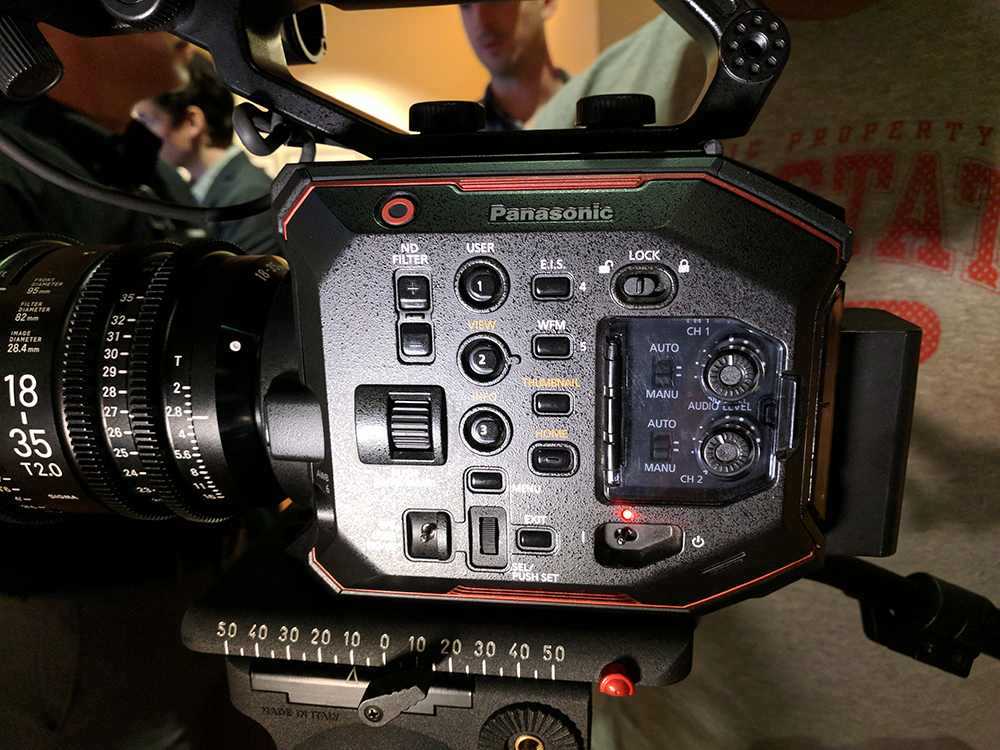

Filmtools
Filmmakers go-to destination for pre-production, production & post production equipment!
Shop Now